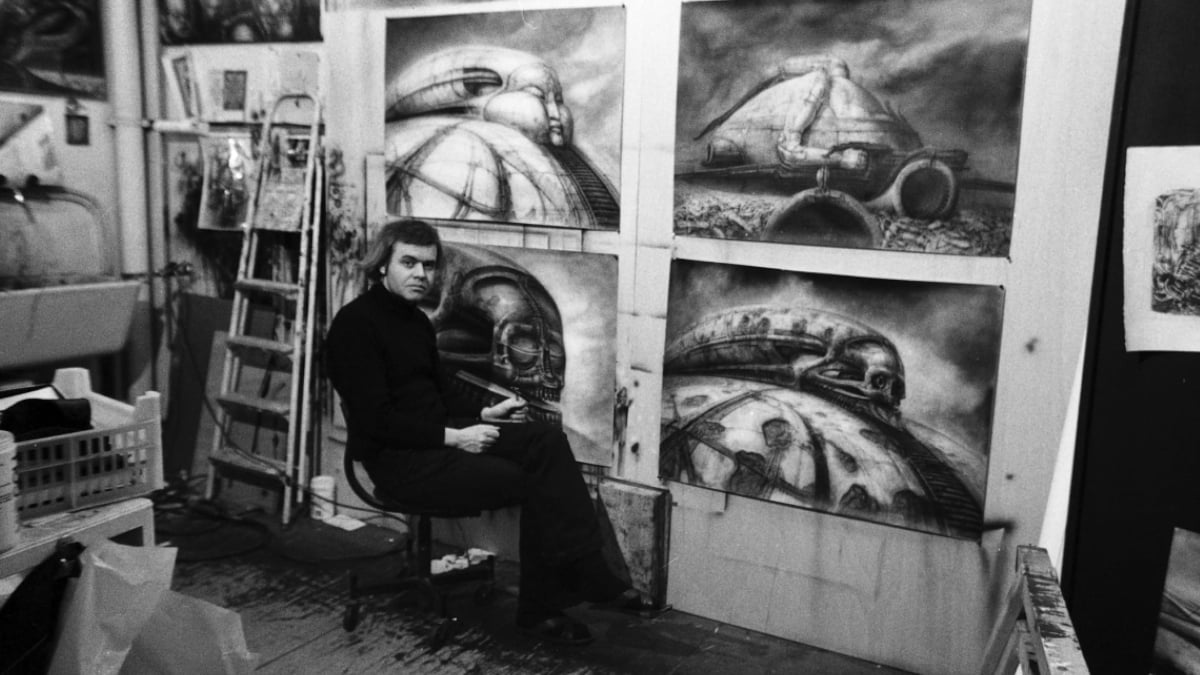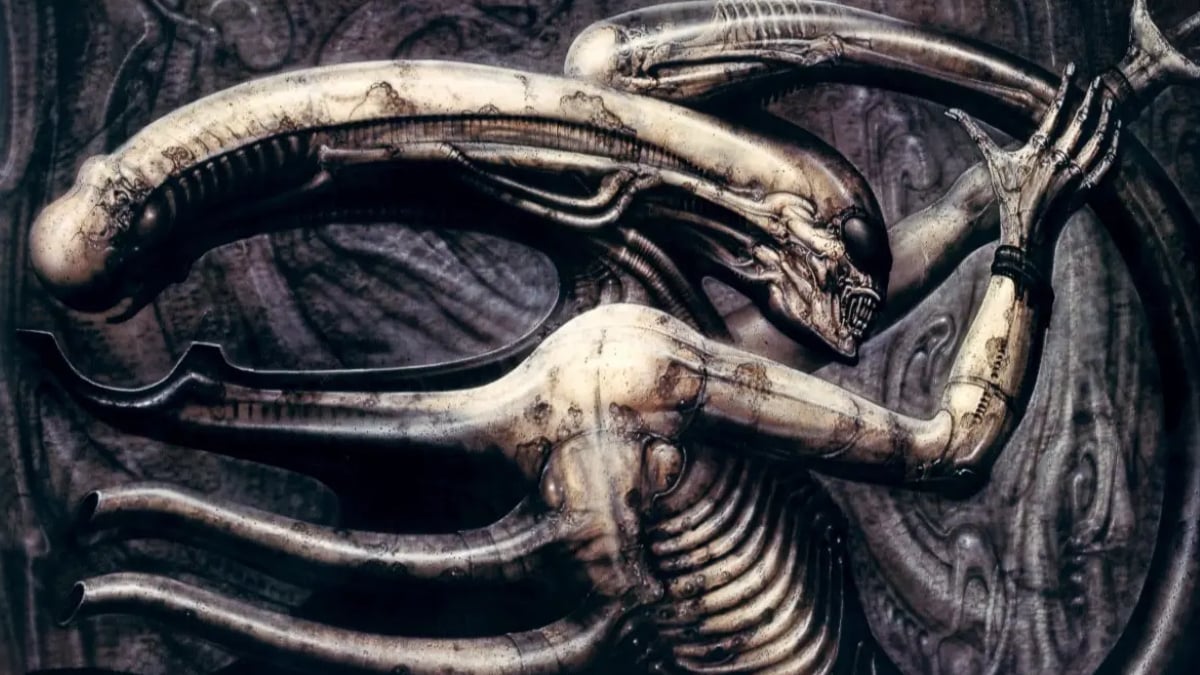The Alien franchise is one of the most terrifying movie series ever. Beginning with Alien in 1979, its longevity is highly impressive, as Alien: Romulus hit theaters 45 years later, in Aug. 2024.
The franchise’s iconic Xenomorph is a huge factor in that longevity. The endoparasitoid species is instantly recognizable by its skeletal and biomechanical appearance, dark coloring, and inner set of jaws, and its instinctive murderous nature and acid blood make it even more terrifying.
Xenomorphs have appeared in seven Alien movies and two Alien vs. Predator crossover movies, several short films, a web series, video games, comic books, novels, toylines, and merchandise, and they will appear in the upcoming television series Alien: Earth. Suffice it to say, they’re a staple part of the modern pop culture zeitgeist.
But who created the legendary movie monster, and how did he conceive it? Let’s learn more about H.R. Giger.
Who was H.R. Giger?

Born Feb. 5, 1940, in Chur, Graubünden, Hans Ruedi Giger was a Swiss artist. He died on May 12, 2014, in a Zurich hospital at the age of 74. As per the Guardian, press in his native Switzerland said he died from injuries sustained in a fall on some stairs.
Giger was known for his airbrushed images that blended human forms with machines. This art style is known as “biomechanical” and is visible in the design of Xenomorphs, particularly the bipedal specimens that used humans as their host species.
After screenwriters Dan O’Bannon and Ronald Shusett drafted the initial script for Alien, they found they needed a convincing way for their eponymous creature to get onto the ship. Shusett was inspired by a dream, which he explained in the documentary Alien Evolution; “I have an idea: the monster screws one of them.”
When Giger was brought on board and showed O’Bannon his nightmarish artwork, the screenwriter was impressed and disturbed: “I had never seen anything that was quite as horrible and at the same time as beautiful as his work.”
When Alien director Ridley Scott chose Necronom IV, a painting Giger completed in 1976, as the basis for the Xenomorph’s design, he did so because of its beauty and strong sexual overtones.

The artist took influence from his work and conceived the Xenomorph as vaguely human, neither male nor female, but in full armor, protected from most things actual humans could throw at it. He gave it no eyes, so you couldn’t tell if the creature was looking at you, and heavily utilized his love of biomechanical art in its aesthetic — a fact epitomized by the fact that its body included everything from Rolls-Royce parts to the snake vertebrae.
His methodology worked. The Xenomorph is as horrifying (and mesmerizing) to look at today as it was 45 years ago — and it’s contributed to Giger being “one of the most important Swiss artists of the second half of the 20th century,” according to Tobia Bezzola, curator of Zurich’s fine arts museum.
May H.R. Giger rest in peace.

